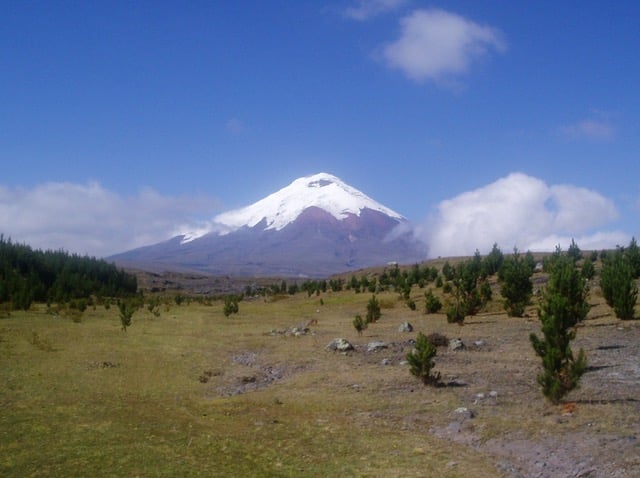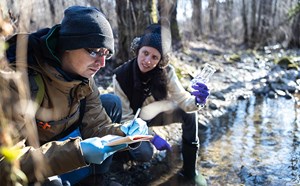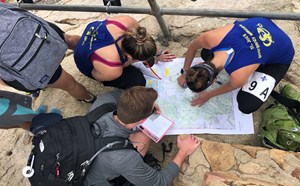
Misadventures in the Mountains
by Patrick Burns, MD
ACEP WM Secretary / Newsletter Editor
I spent most of my early life living on the flatlands where the adventurous would summit upwards of 6000 ft. These could be arduous journeys to be certain but lacked the constant spectre of hypobaric hypoxia. It wasn’t until 23 that I first began to understand dangers of altitude while guiding a summertime trip in Ecuador. On an excursion into the shadows of Cotopaxi, we were to spend our time with traditional Ecuadorian skilled horsepeople. I didn’t understand that this meant on horseback, all day, like 10 straight hours, wearing dander-laden gear, that had been worn and dutifully hung in the stable for many years. As my eyelids puffed and my vision became slit-like from hanging out with my newly discovered allergen, I learned the value of backups plans as I was able to abdicate responsibilities to my colleague as I drifted into diphenhydramine doldrums.
A few hours later, I awoke to my ‘work wife’ and a spattering of our 16 high school aged ‘children’ ill with a headache, nausea, and vomiting as we tried to settle into our comfortable ranch for our first time sleeping at 10,000 feet. Eventually everyone slept and with symptoms resolved by morning, our group headed for a closer view of the glacial edge on Cotopaxi (it was at a much lower elevation in those days for some reason). My respect for AMS now rivals Ecuadorian respect for coca tea.
A decade later, finishing up EM residency on a hopeful path to a Wilderness Medicine Fellowship, I found myself back in the shadows of Cotopaxi as a researcher on an expedition length ultramarathon. After 2 weeks acclimating, tending to runner’s blisters, camping and cheering on competitors; the celebrations were over and a few of those who did not compete were planning an ascent of Cotopaxi.
Our driver said that nearly 50% of the people who attempt this summit with his guiding group don’t make it to the top. I was unsure if declaration was meant to be motivational, cautionary or prophetic but our plan was laid out for us. We were to drive to the parking lot and hike 45 minutes to the refugio (15,744 ft / 4,800 m) and sleep until 3 am for a shot at a sunrise summit (19,347 ft / 5,897meters). We were young, healthy and athletic and this was not a technical climb. I kept repeating that back to myself as I shivered to stay warm on the 3rd bunk level of the refuge.
We had crampons on, headlamps checked and guides roped in as we marched in line up the frigid face of this massive glacier. As we ascended, a few fell behind or a few pulled ahead depending on your perspective. My athletic climbing partner did not seem to be on the same death march up the glacier as I and opted to join another group as hints of daylight reflected off the icy ground.
I remember two things clearly; eerie silence and my voice speaking Spanish.
I could speak enough Spanish to communicate and understand, but I would take a step, stumble and vomit. I continued for 10 more steps of the same. I was convinced, that I wasn’t doing great but it couldn’t be HACE, my brain still worked, I could still speak Spanish.
(In reality, my Spanish language ability has always been suspect.)
Shuffle shuffle…..fall…. vomit again.
With my strength gone and the summit still 1000 ft out of reach, I assented to my guide and started to slowly pass the rest of ascending crew with knowing looks and supportive fist bumps. But I kept falling, and vomiting. Finally, my guide looked at me and said, ‘we need to get down now or you will die.’
Well, that’s not a fun thing to hear.
So he sat me down, tied a rope around my waist and he ran. We descended on the glacier nearly 1000 ft before he attempted to have me stand. At that point I could walk, but I was not better. I finally started to feel better after hours at lower elevation when the door opened and a German strawberry farmer from our group returned after a successful summit, only to fall to his knees and remind us of the lovely breakfast we ate earlier that morning.
Remember, that illness due to altitude improves with descent, but it may take a little bit of time.
My work in high altitude environments has continued because I am drawn to challenge. So I will continue to go to the mountains; more knowledgeable and with a greater appreciation of the dangers.
…and someday I will summit Cotopaxi.



